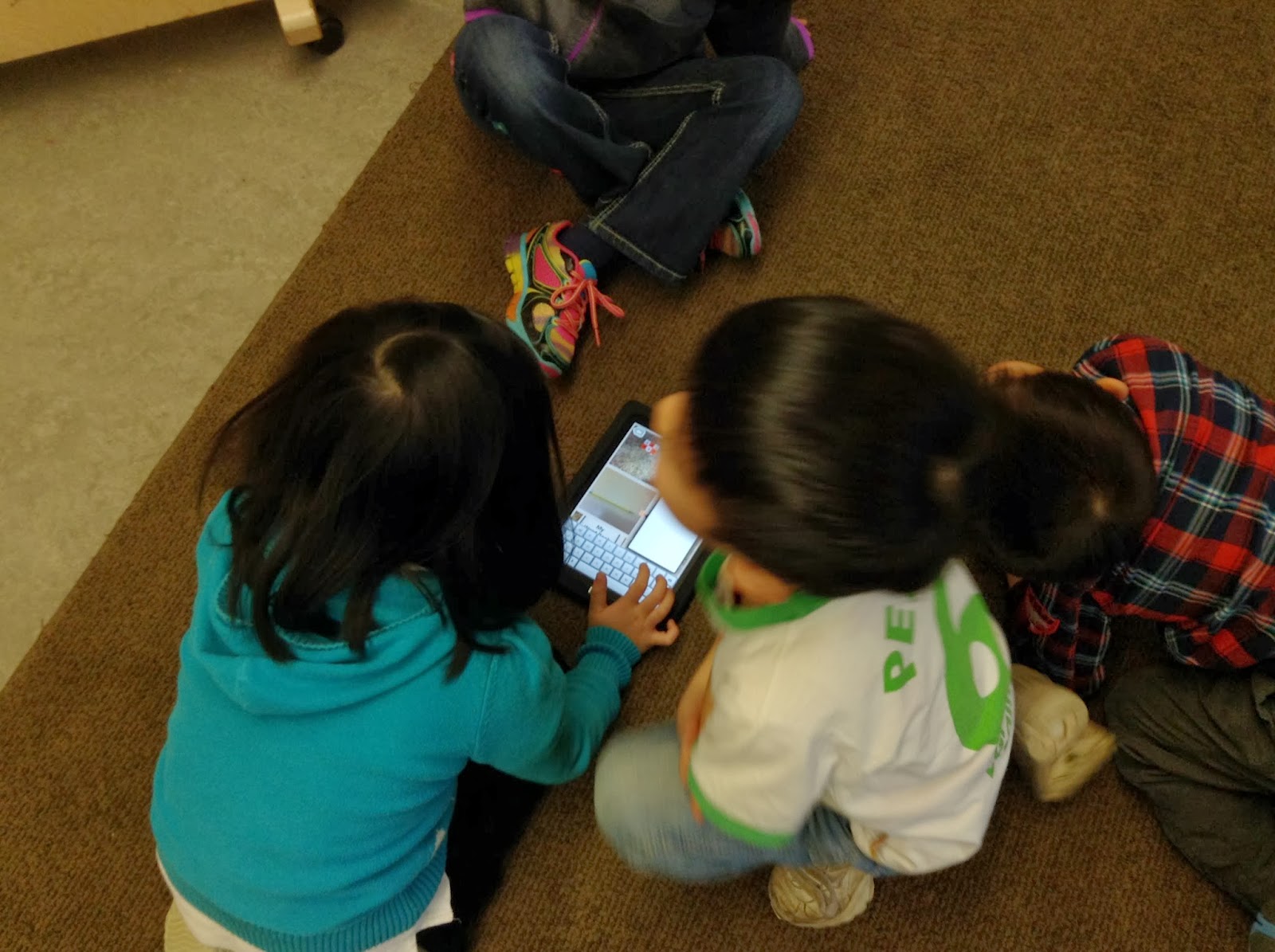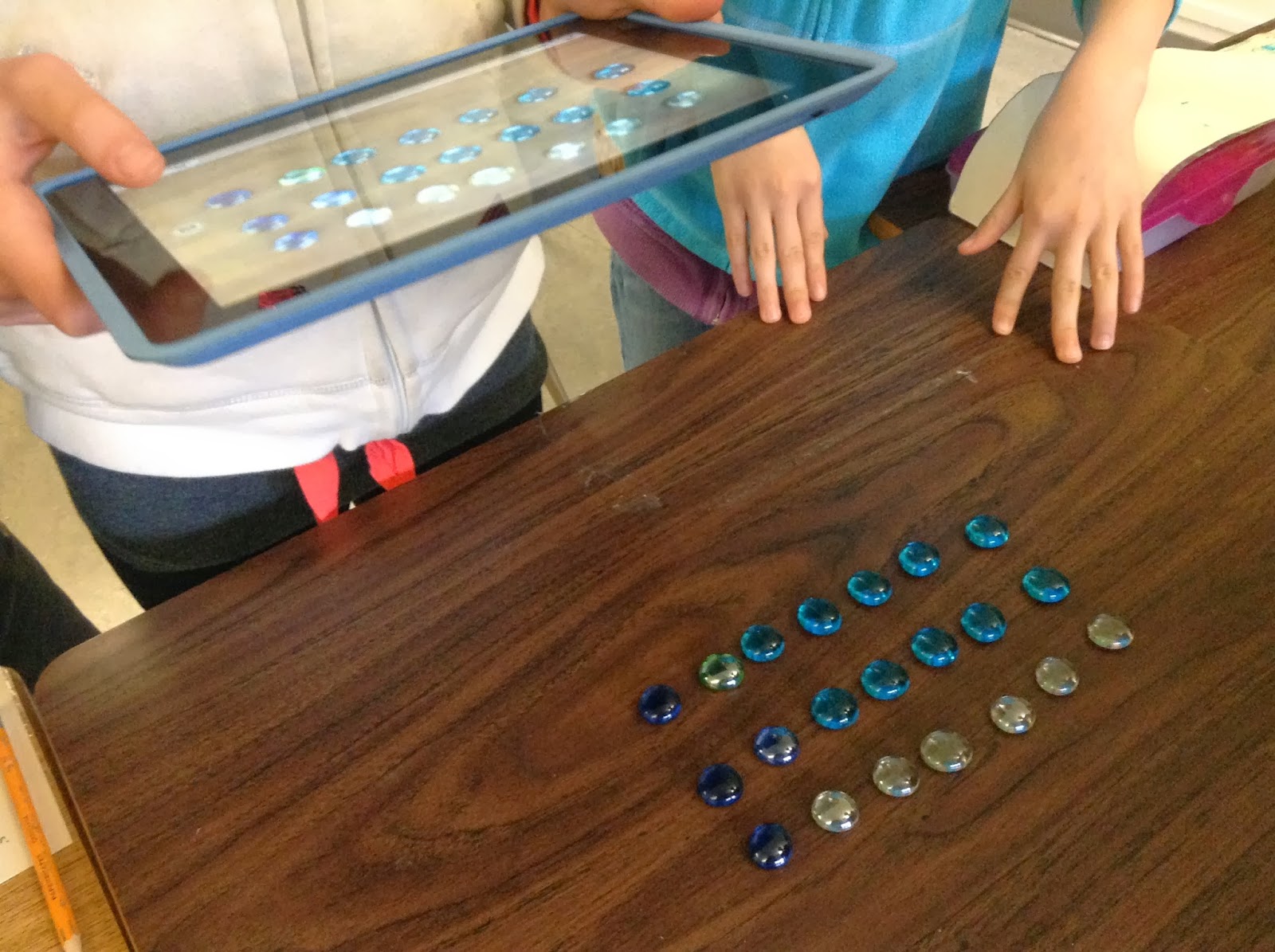In Jenna Loewen's grade one class, the students have been investigating measurement and building understanding of comparison, using specific math language to explain their comparisons. Jenna created an anchor chart to support her students.
The students were excited to use the iPads for a measurement task. They worked in small groups and were asked to choose an item in the classroom and then find two other items and compare their measurements. They learned how to use the camera on the school's iPads and then used the app, PicCollage to fit their photographs into a template and add text. Although most students focused on shorter than and longer than, some students explored taller than as well as heavier and lighter than.
The grade one students particularly enjoyed seeing their PicCollages posted up on the big screen, by connecting the iPads to the projector.
In Paula Zack's grades 5 and 6 class, the students have been learning about the relationship between multiplication and division using arrays as a model. The students worked in groups and used materials to create arrays and then used a screencasting app called Doceri to explain their understanding.
The following is a Doceri movie created by a small group of students. As the teacher and I discussed, these screencasts are a great "assessment for learning" tool, as misconceptions are captured. For example, in this little movie, the students do a great job of listing the multiplication and division facts represented by the array and acknowledge that if the array was rotated, their equations wouldn't change. The students (in odd chipmunk voices...) explain that 4x5 is the same as 5x4 by saying the order doesn't matter and then generalize this to division, where the order actually does matter (20 divided by 4 and 4 divided by 20 are not the same thing). The other generalization the students make is that for both multiplication and division, equal groups are used. This is the case when we use arrays as a model, but when we divide in real life, there are often those dreaded remainders! Again, something to take into consideration when planning the next set of learning experiences for these students.
~Janice















No comments:
Post a Comment